



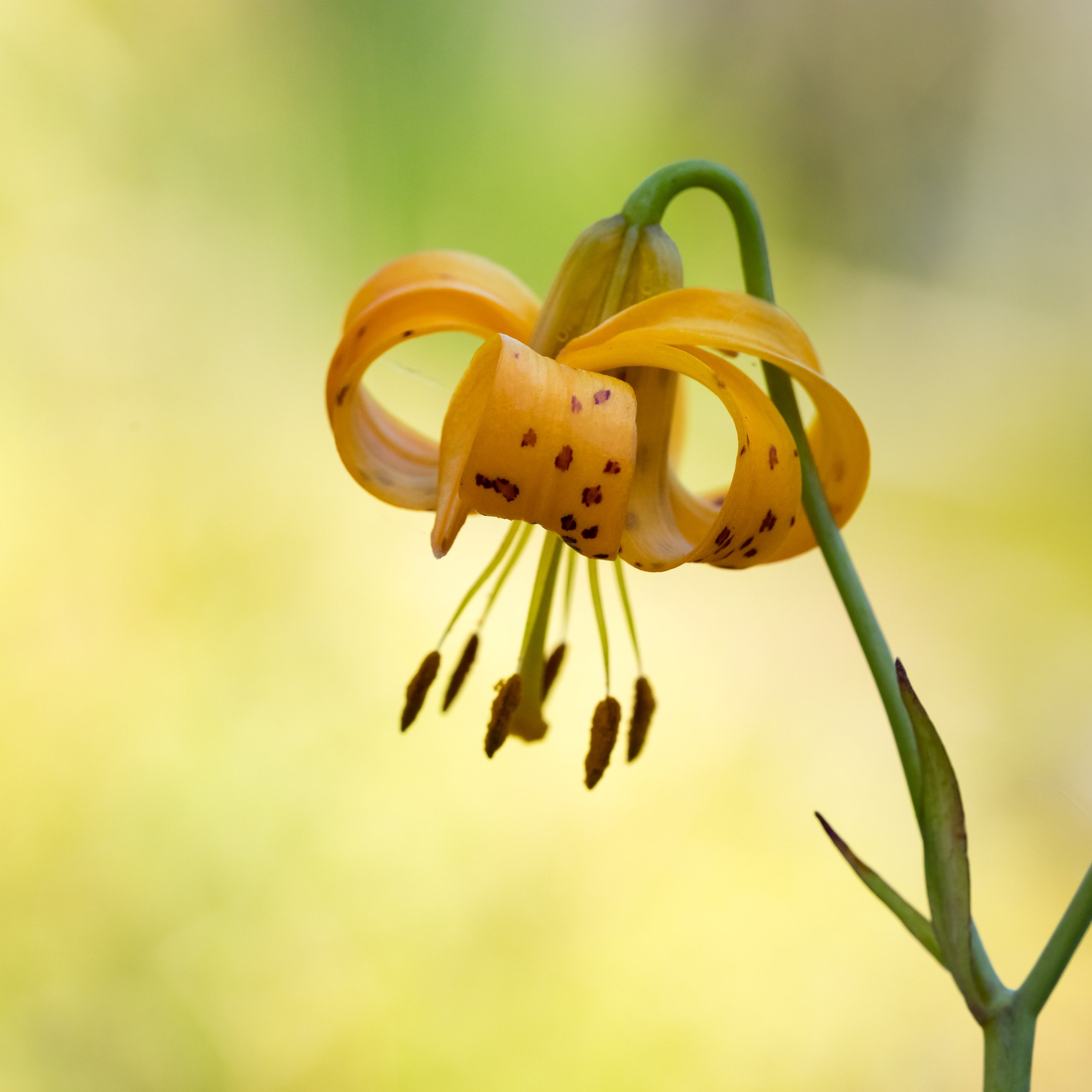
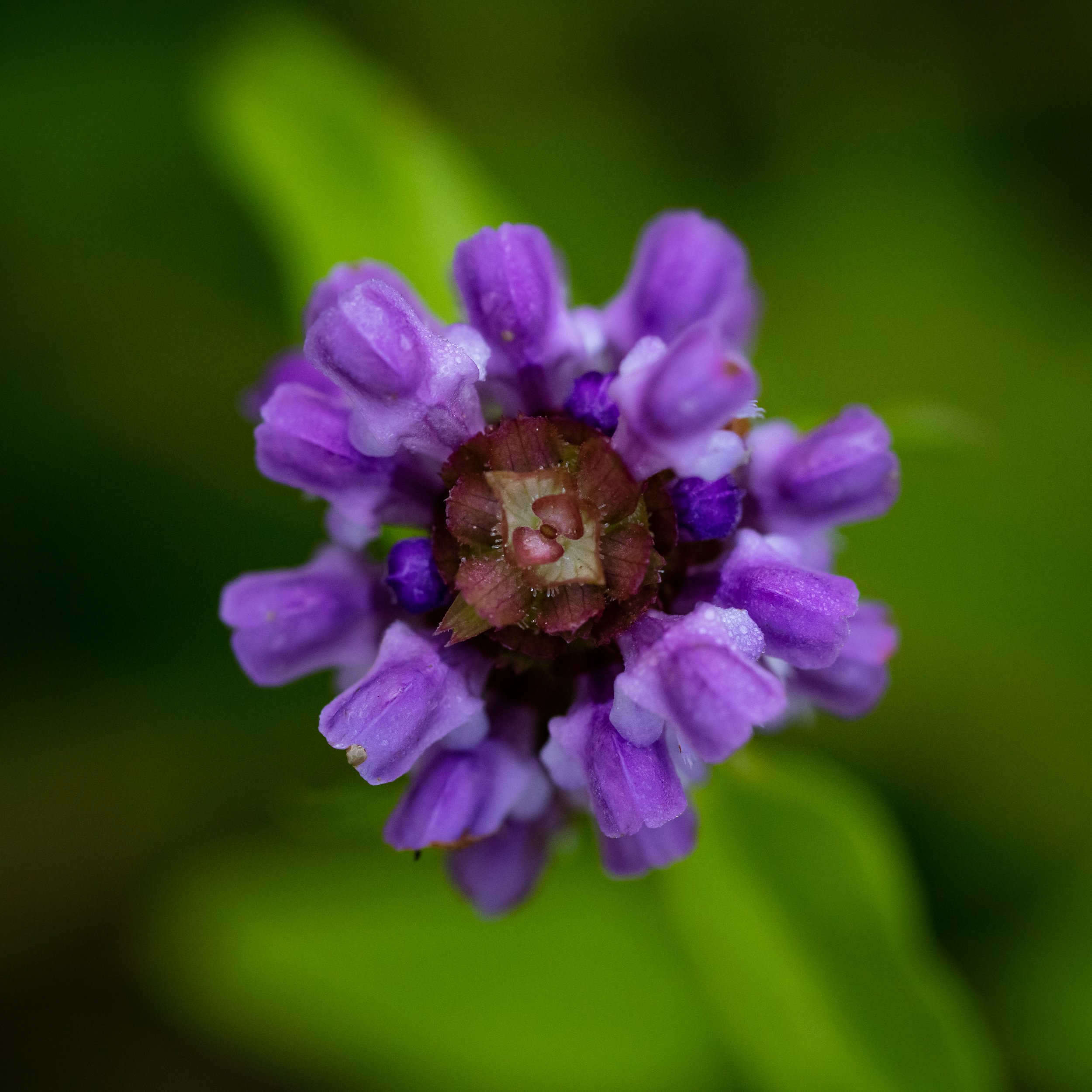

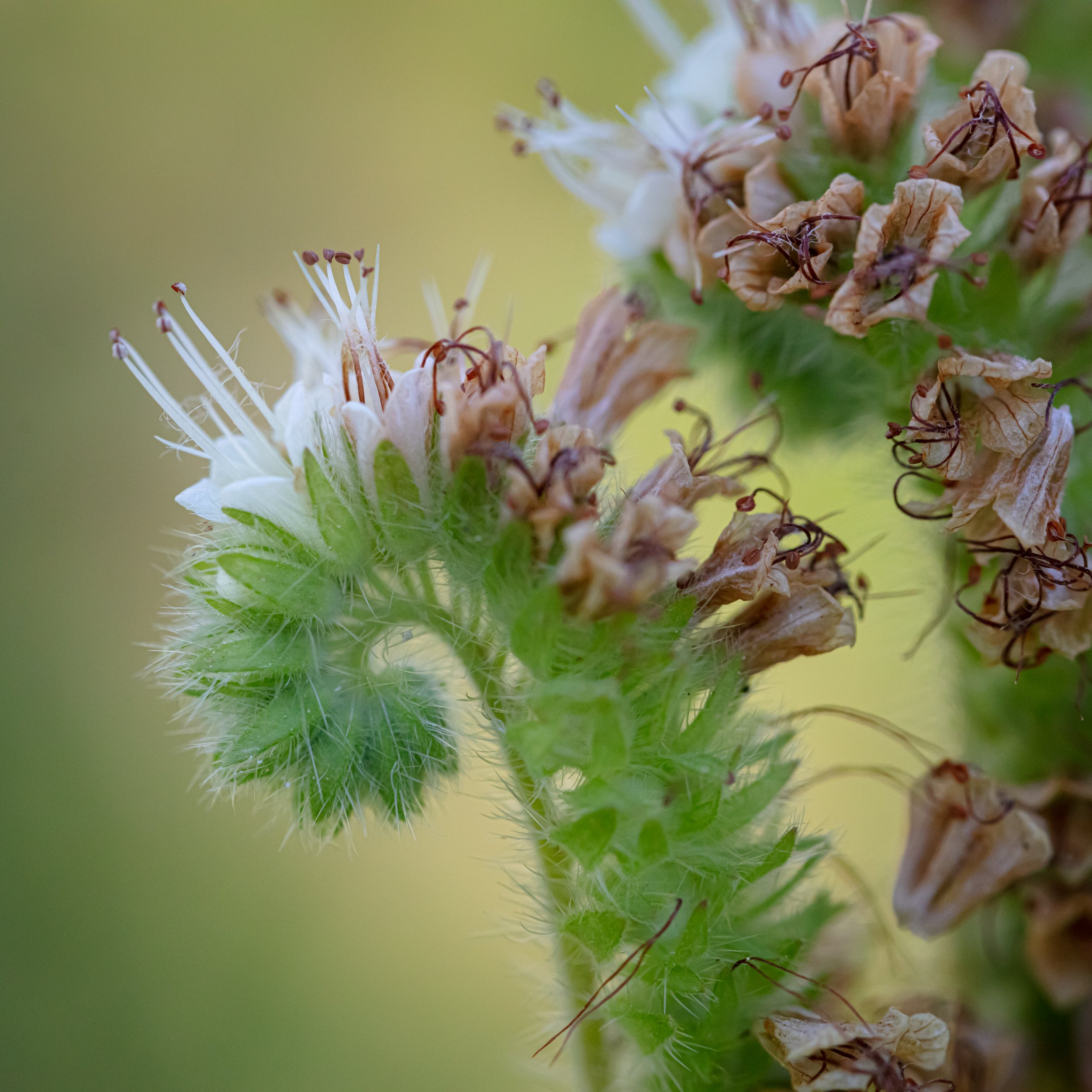

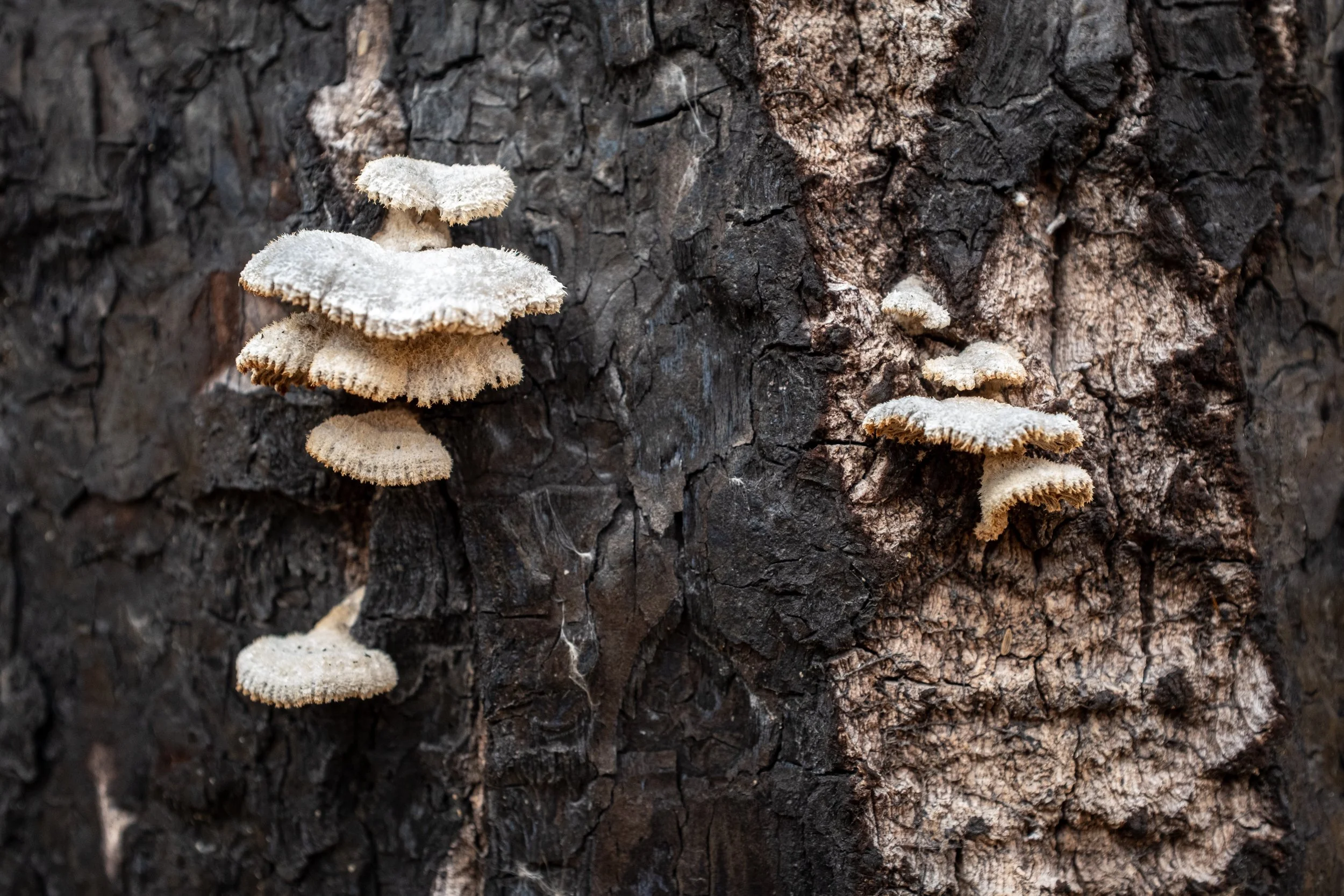


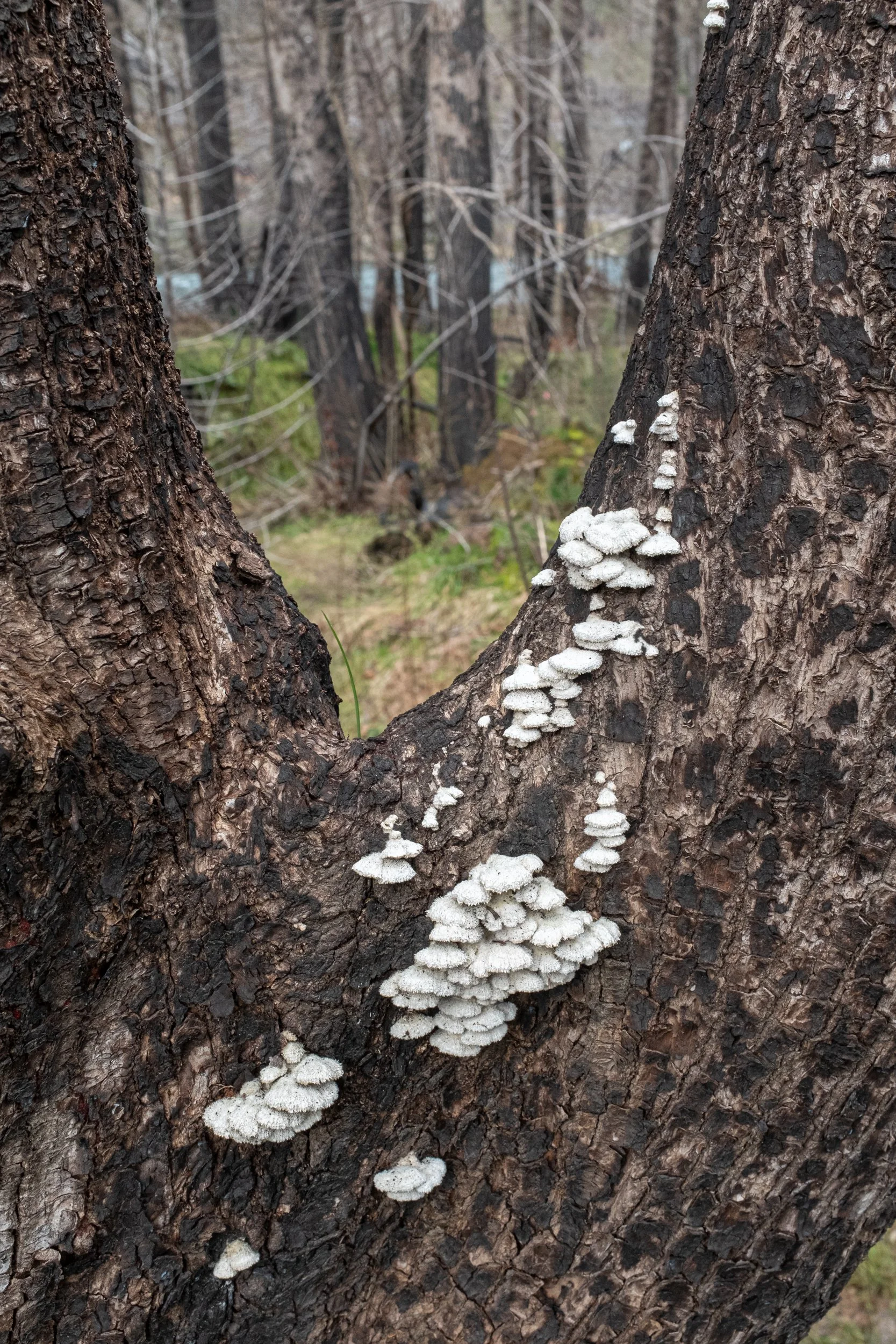







Your Custom Text Here
ASEASONAL LEAFING
Many of the younger vine maples and chinquapin trees burned down to 6”-18” stubs. They posed a danger because they could easily impale a careless photographer. In addition to their lovely sculptural qualities, they produced bright, shiny leaves in mid-winter, rather than a normal springtime bloom. We wondered at the environmental and biological factors that caused this atypical behavior.
FLOWERS RETURN
The fire abruptly blackened a living forest that was once colored in a rich variety of greens and browns. But vibrant colors returned with the spring blooms of dozens of herb and shrub species sprouting from buried plant parts and from seeds arriving on the wind.
SPOROCARPS
In the first months after the fire, white exudates oozing down the blackened trees were the first signs of biological processes underway inside. Soon whitish sporocarps signaled that wood-decomposing fungi had entered the trees, matured, and then put out these structures to share their spores with the rest of the world.
SAPSUCKER HOLES
Woodpecker holes tell us of other biological processes happening inside and now outside the tree. One type of woodpecker, the sapsucker, drills holes though the bark to draw sap into sapwells, where it can access nourishment from the sap and incidental associated bugs. In another form of tree invasion, boring beetles enter the tree to feed and lay eggs from which larvae emerge. The woodpeckers drill through the bark to find and feed on the larvae. The beetle and woodpecker holes provide access for wood-decomposing fungi, and the tree responds by sending sap to fend off the intruders. Sap seeping from the woodpecker holes flows down the blackened trunk. In these particular stories we also see the larger story of a vast, biologically diverse forest in which new life is constantly emerging from dead and decomposing organic matter.
BARK EXFOLIATION
Standing dead trees crumble to the forest floor in many ways. In the second year following the fire, hardwood trees and some conifers began to vigorously shed their bark. Scales of bark flaked off some other species. The thin-barked big leaf maples commonly had long strands of bark detach at the base of trees where the fire burned hottest, leaving the dangling bark to rattle in the breeze.
ASEASONAL LEAFING
Many of the younger vine maples and chinquapin trees burned down to 6”-18” stubs. They posed a danger because they could easily impale a careless photographer. In addition to their lovely sculptural qualities, they produced bright, shiny leaves in mid-winter, rather than a normal springtime bloom. We wondered at the environmental and biological factors that caused this atypical behavior.
FLOWERS RETURN
The fire abruptly blackened a living forest that was once colored in a rich variety of greens and browns. But vibrant colors returned with the spring blooms of dozens of herb and shrub species sprouting from buried plant parts and from seeds arriving on the wind.
SPOROCARPS
In the first months after the fire, white exudates oozing down the blackened trees were the first signs of biological processes underway inside. Soon whitish sporocarps signaled that wood-decomposing fungi had entered the trees, matured, and then put out these structures to share their spores with the rest of the world.
SAPSUCKER HOLES
Woodpecker holes tell us of other biological processes happening inside and now outside the tree. One type of woodpecker, the sapsucker, drills holes though the bark to draw sap into sapwells, where it can access nourishment from the sap and incidental associated bugs. In another form of tree invasion, boring beetles enter the tree to feed and lay eggs from which larvae emerge. The woodpeckers drill through the bark to find and feed on the larvae. The beetle and woodpecker holes provide access for wood-decomposing fungi, and the tree responds by sending sap to fend off the intruders. Sap seeping from the woodpecker holes flows down the blackened trunk. In these particular stories we also see the larger story of a vast, biologically diverse forest in which new life is constantly emerging from dead and decomposing organic matter.
BARK EXFOLIATION
Standing dead trees crumble to the forest floor in many ways. In the second year following the fire, hardwood trees and some conifers began to vigorously shed their bark. Scales of bark flaked off some other species. The thin-barked big leaf maples commonly had long strands of bark detach at the base of trees where the fire burned hottest, leaving the dangling bark to rattle in the breeze.